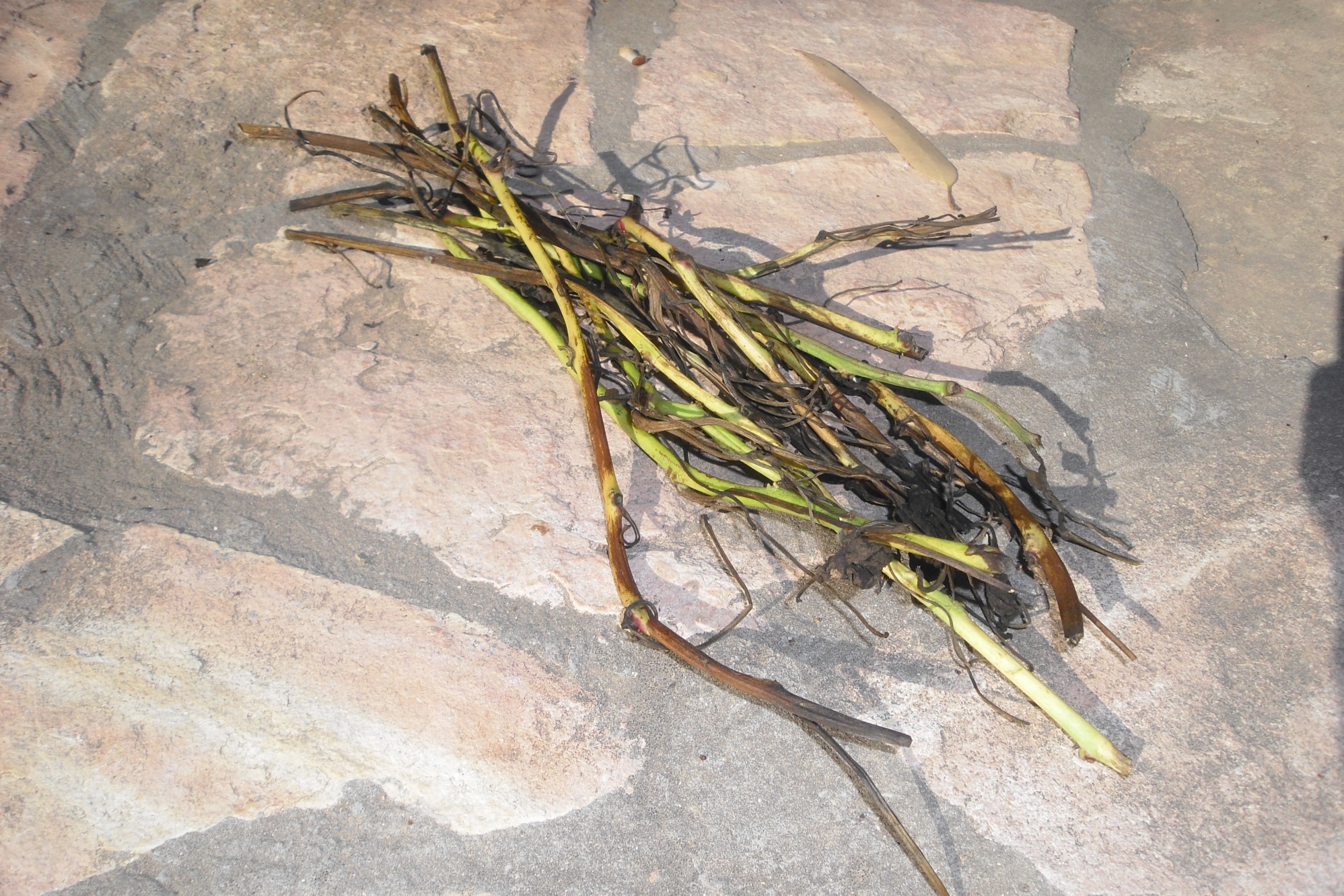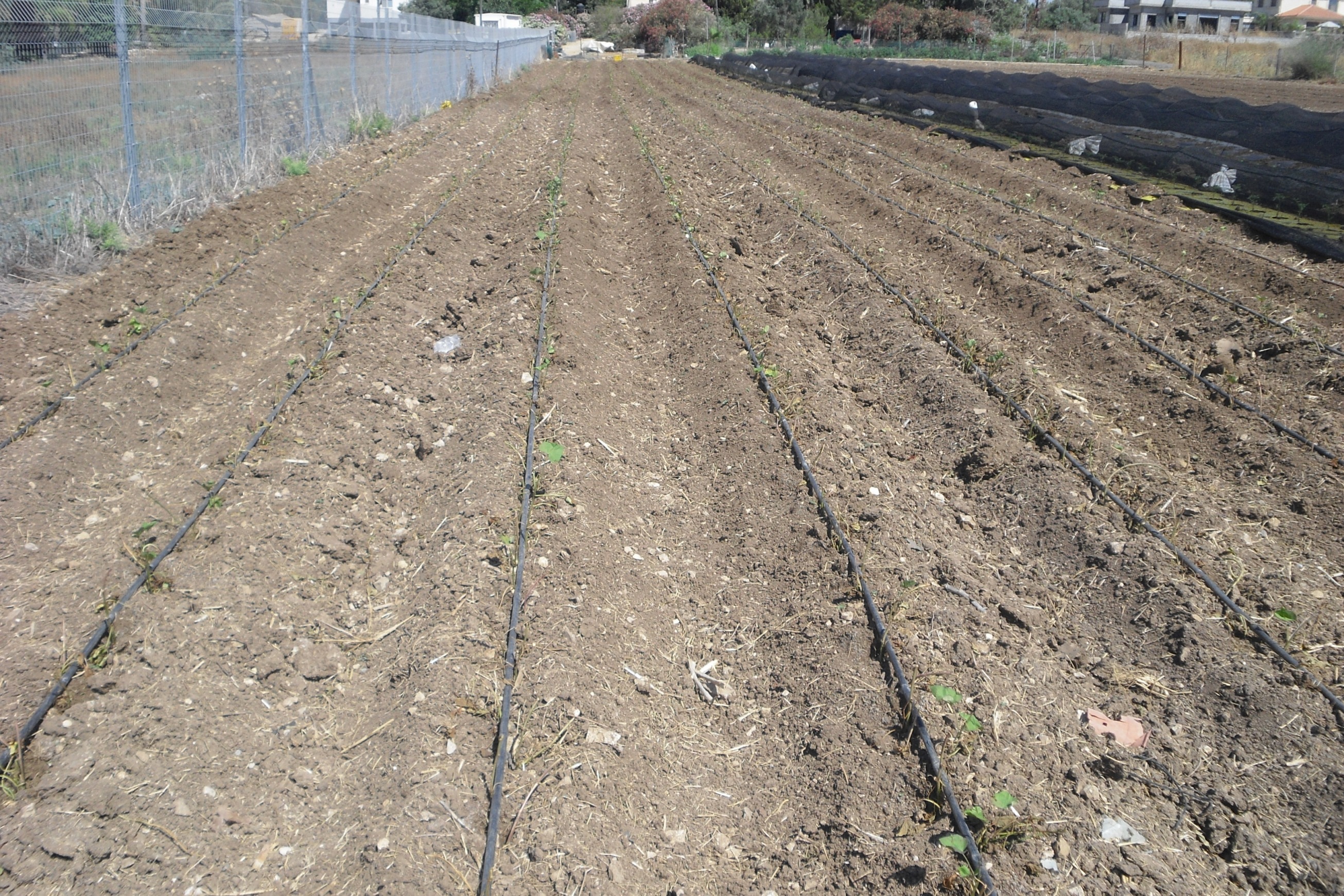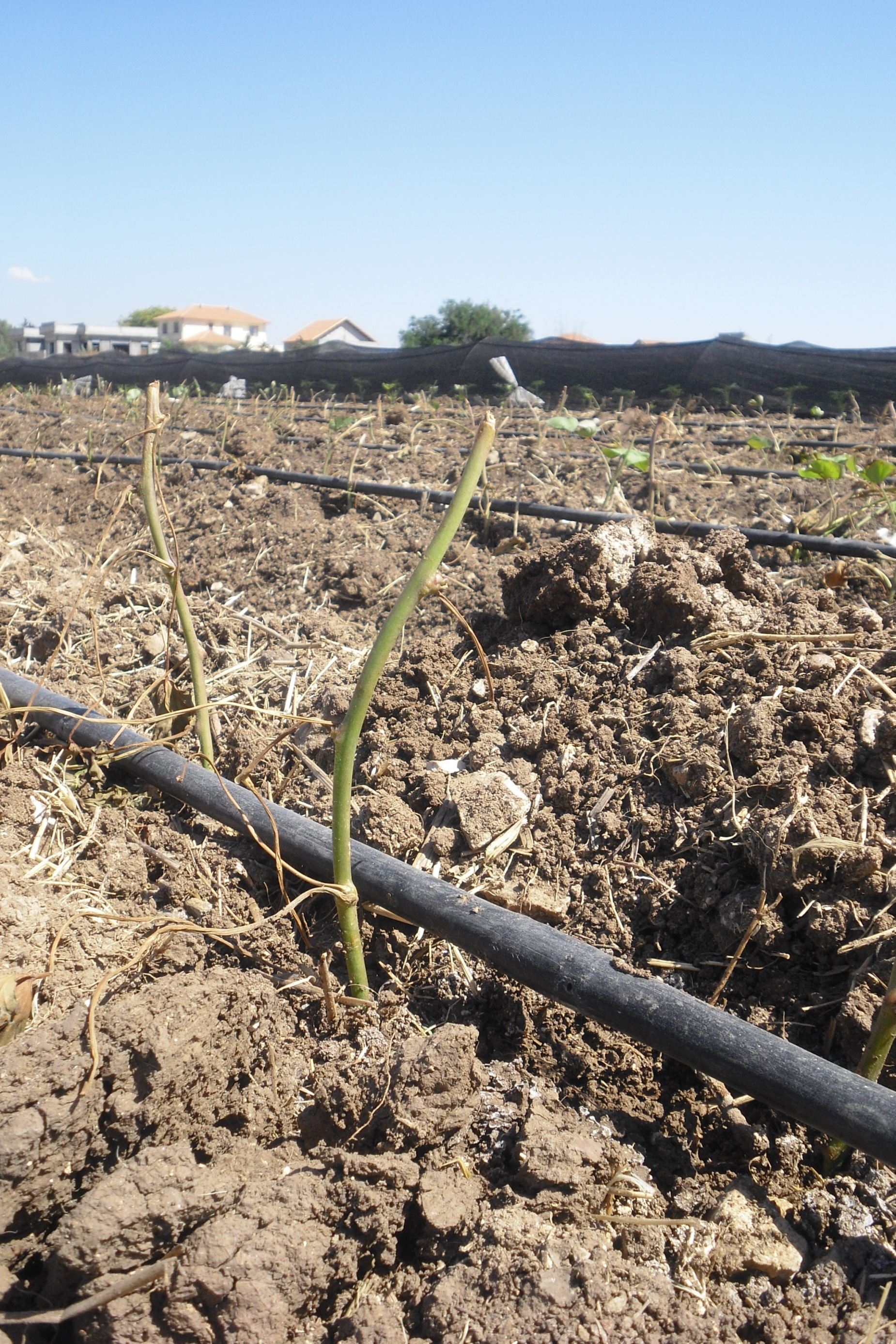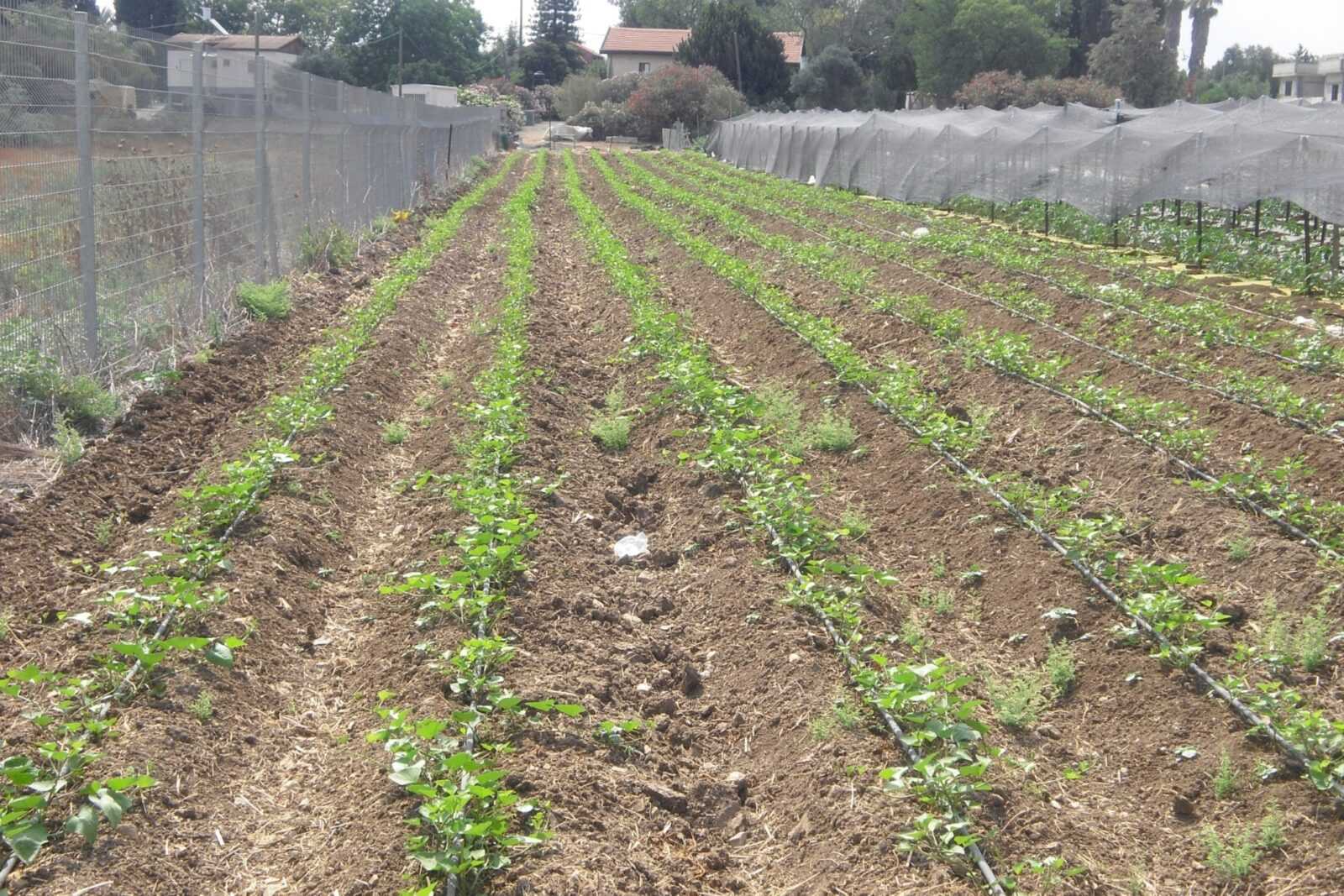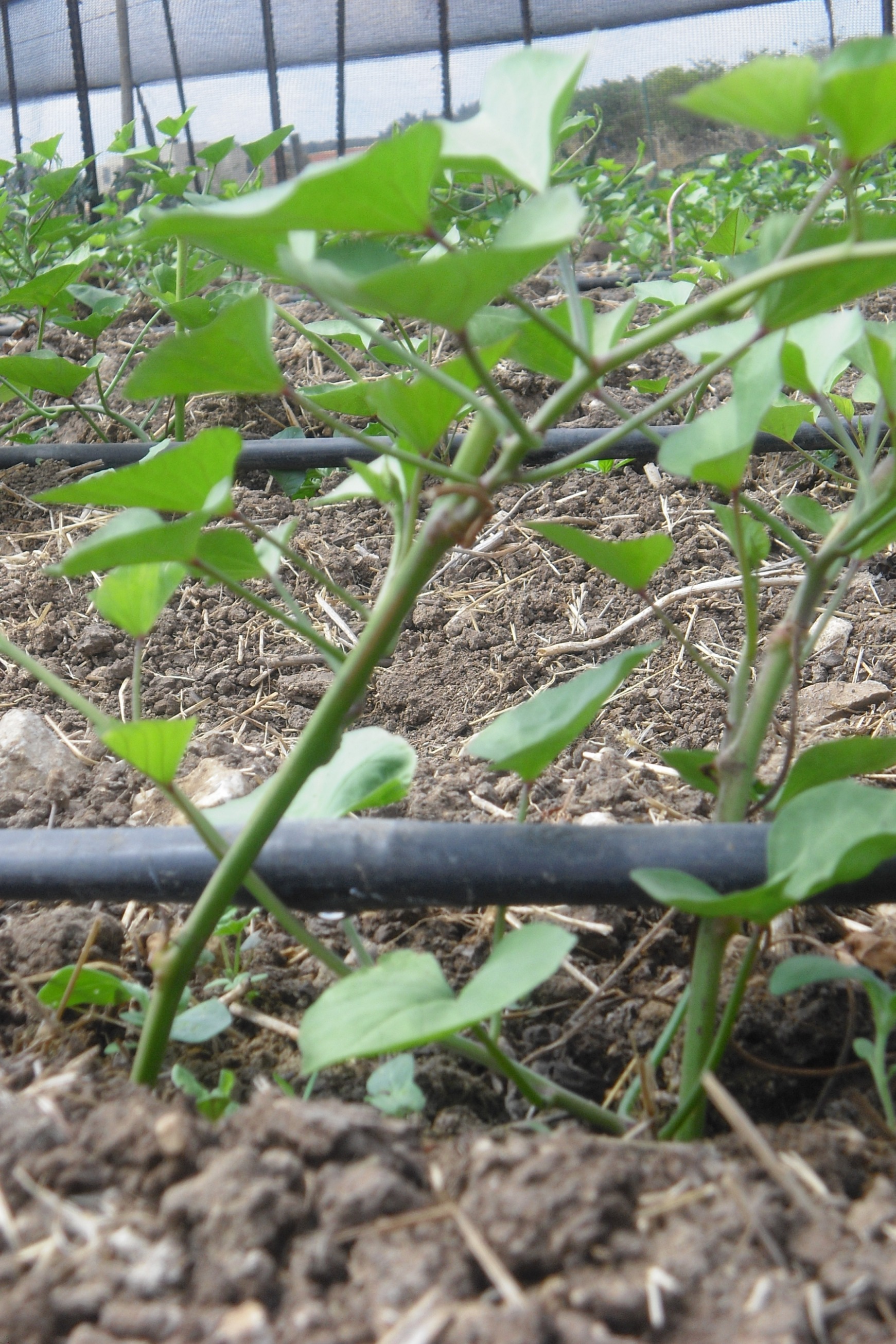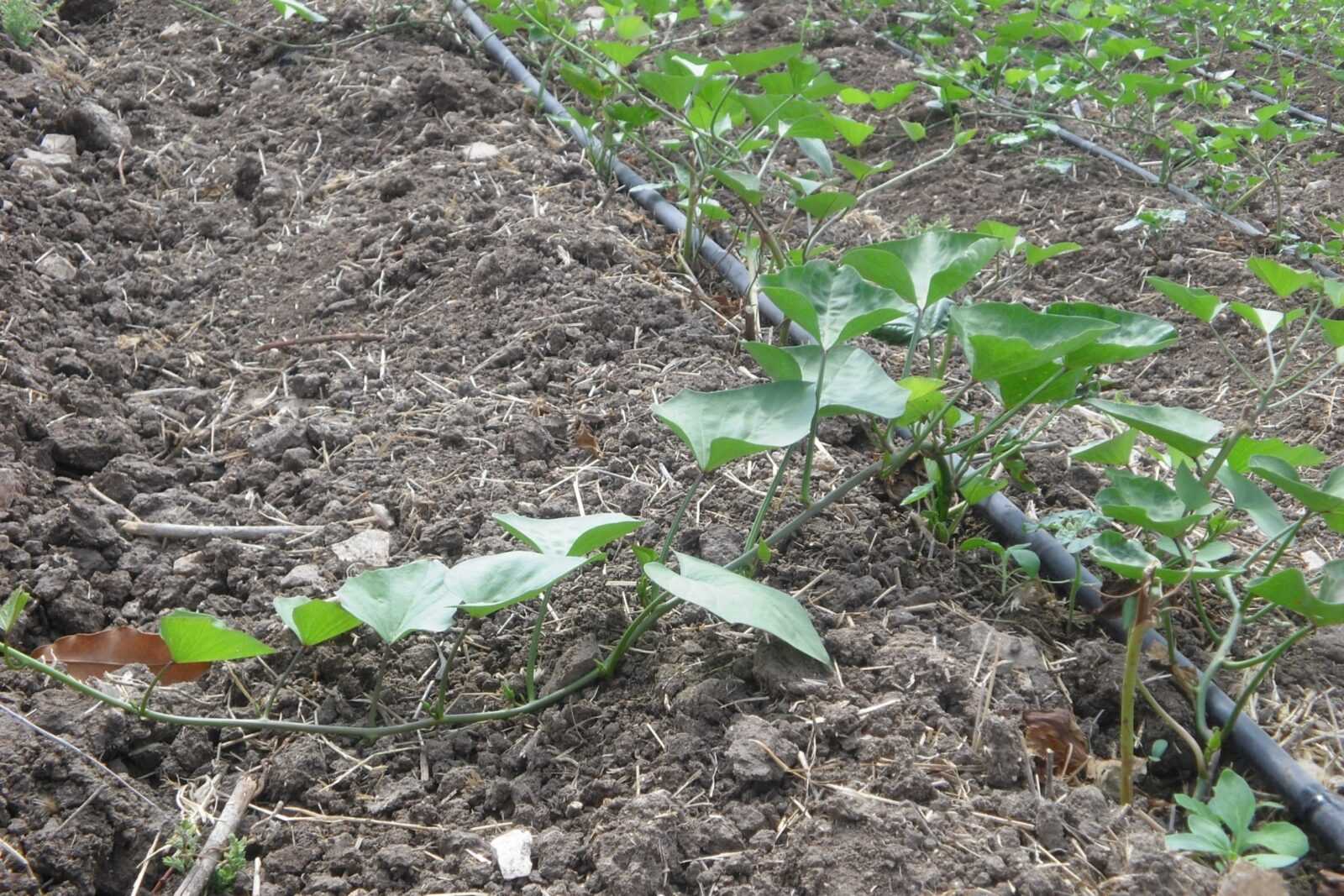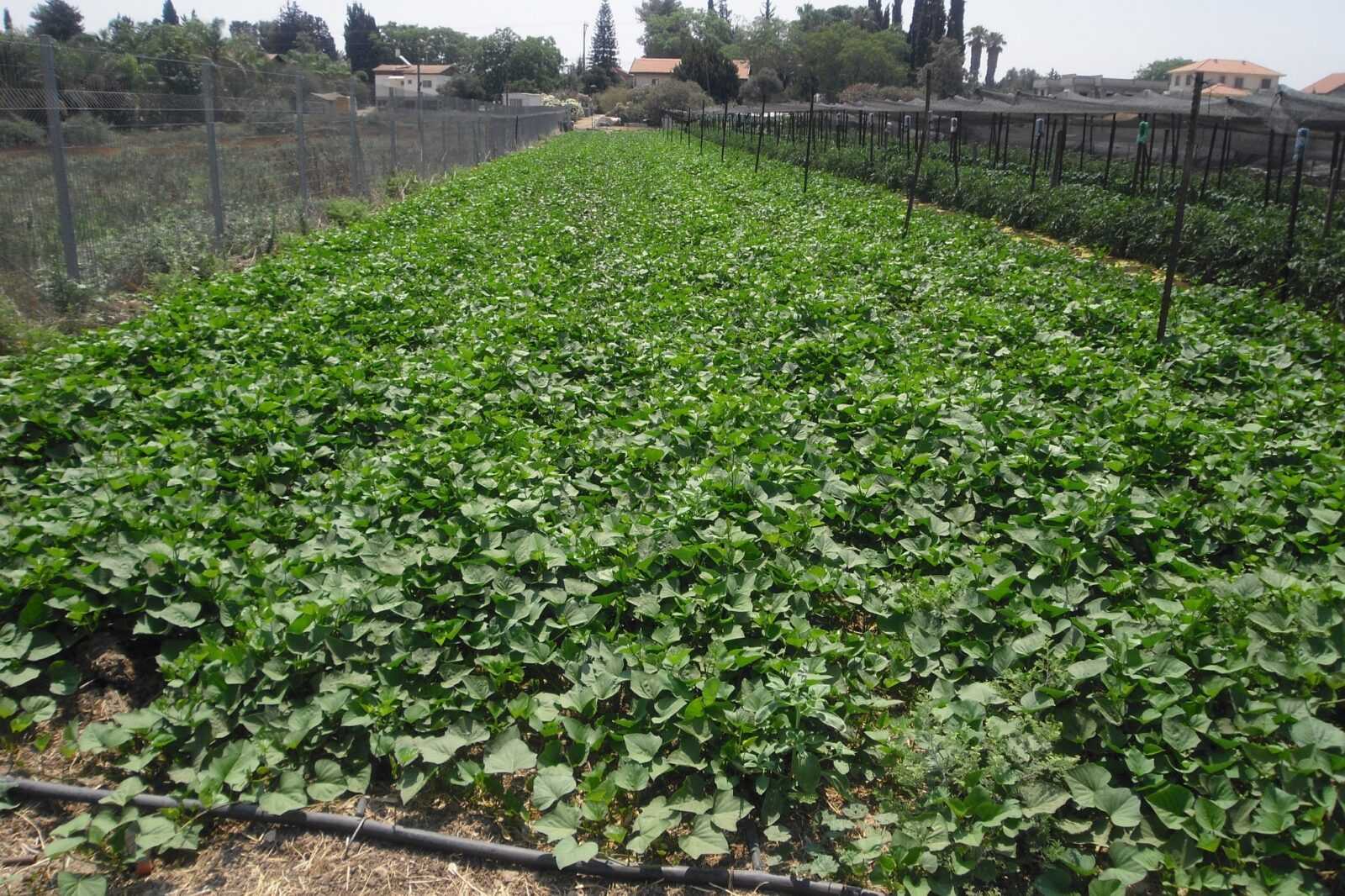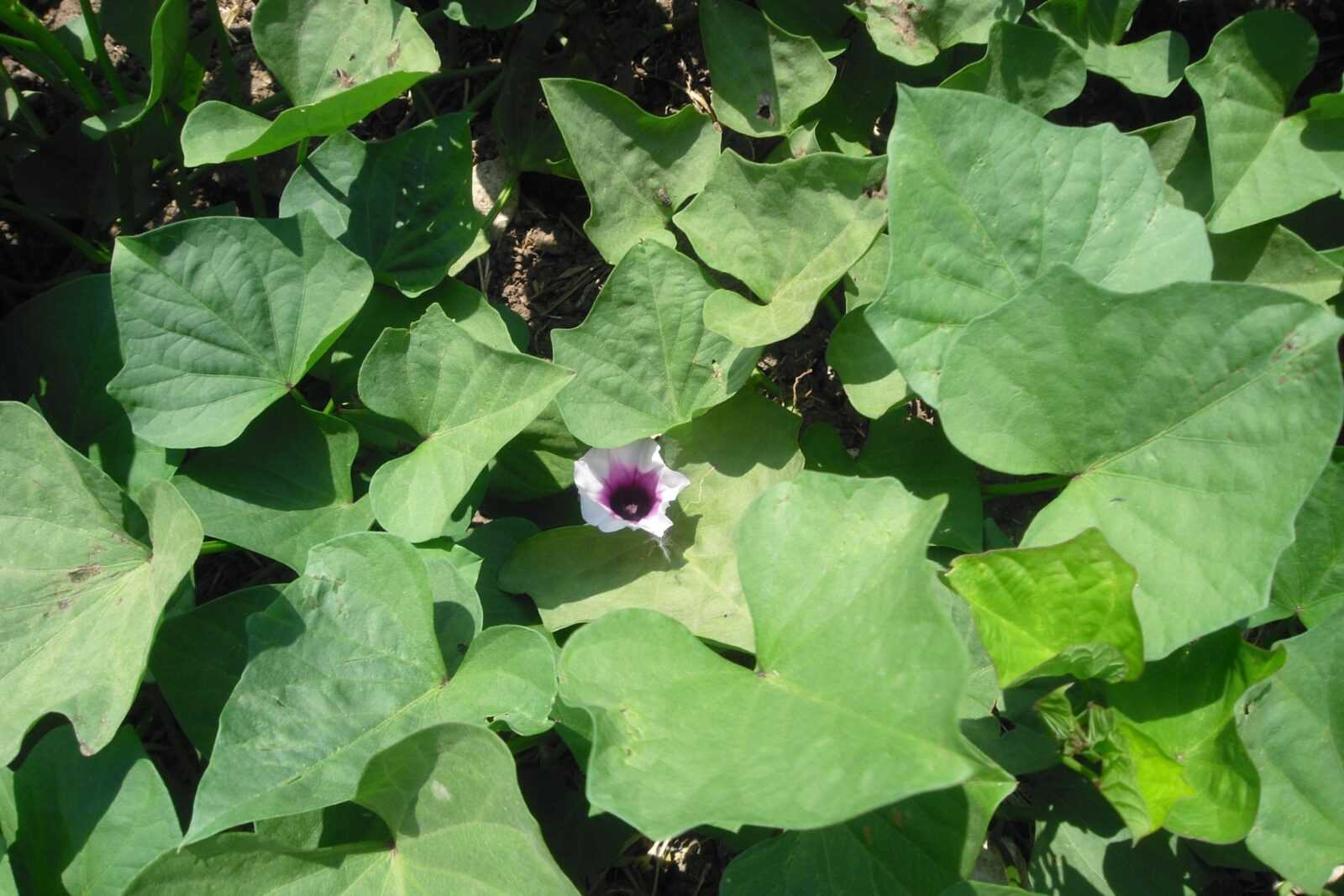I’m not sure how I neglected to mention the first autumn harvests of our sweet potatoes. Though this delicious beauty has frequented our boxes for several weeks now, we somehow didn’t get around to giving her the grand ovation she deserves. This newsletter is thus lovingly devoted to welcoming that spirited redhead now gracing our boxes.
Though the amazing sweet potato has been with us since fall, our journey together actually began some seven months ago. Since then, we’ve carefully followed the various stages of her growth – sometimes through the camera’s lens. So this week, here’s a glossy look at our glamorous redhead veggie – the sweet potato (aka yam)!
Growing sweet potatoes is a lesson in faith, imagination and hope. This is how it works:
In the beginning of May we received a package from Kibbutz Nirim, which we opened to find this treasure:
“Well, hey there, Georgia!” we greeted our sweet potato, and happily placed the cuttings into the pre-dug mounds we’d prepared in the ground, each separated by 15 centimeters. Here’s how it looked like when we were done:
And close up:
Several days later, we started to notice tiny little leaves growing on those branches. Then, lo and behold, here’s the scene after just one week:
Remember that naked branch? Look how stylishly-dressed she is now!
Then, the young seedlings began stretching out beautiful arms, on their way to a bountiful future:
Only two weeks later, the field looks like a sea of yams, with a multitude of densely assembled leaves, branches, and a vibrant, verdant carpet of blooms:
And up close:
…and zooming in even closer: look at these gorgeous little flowers, with their characteristic Convolvulaceae family purple hue at the center.
Underneath this green carpet, silently but surely, the sweet potato plant shoots out roots which thicken in order to store nutrients for the winter. Four months after the start of the process, we begin exploring what’s happening six feet below. If need be, we turn off the irrigation (causing the sweet potatoes to grow just a little more) and when The Time Comes, we roll the lawn mower over the plots, mowing the heavy thicket from above to make life less tangled for us, and off we go, armed with pitchforks and a smile to dig up the luscious orange roots.
In Hebrew, the word for orange is כתום (Katom) from the word for gold (Ketem, also “stain”) because of the golden color comprised of red and yellow. For me, the orange deserves its royal name, and the synergy of cooling weather and the warmth of the orange hue are a perfect balance for the charming autumn.
The origin of the sweet potato lies in tropical South and Central America. The most ancient evidence of sweet potatoes was found in Peru, from where they mysteriously traveled to the rest of Central and South America, all the way to Polynesia. Some say sweet potato seeds were carried from America to Polynesia by birds or by sunken ships that drifted away. Another assumption is that the sweet potato seeds floated along ocean currents from South America to Polynesia, as they can sprout after having been immersed in sea water. Columbus found sweet potatoes in Cuba, brought them along on his journey to Europe, from where they travelled together with the European conquerors to Africa, India and Asia.

Years of careful selection of sweet potatoes by farmers and nature have made today’s sweet potato very strong and resistant to (or at least tolerant of) diseases and pests. Sometimes the plants can be carriers of various pathogens that are not actively expressed and do not prevent the plant from growing or developing. Basically, the sweet potato hardly suffers from any ailments, and usually grows nicely over a few months’ time.
When the time has come to harvest, there is no urgency to remove the sweet potatoes from the earth right away and store them. They are well-protected within the earth, even during cold winters, thanks to the warmer temperature underground. If you remove the sweet potatoes from the earth, bring them indoors so they’re not too cold. When the outside temperature falls below 13 degrees Celsius, the storage refrigerator should be at a temperature of 13-15 degrees so the sweet potatoes do not catch cold.
This is also why they should not be stored in your home refrigerator. The sweet potato that grows primarily in warm seasons dislikes cold weather, and refrigeration impairs its taste. Store them in a cool, ventilated place, not in a bag or a sealed container, to prevent the accumulation of excess moisture. They need not be hidden from light, because (like radishes and beets) sweet potatoes are roots that contain no chlorophyll, thus will not turn green. This is in contrast to the dense-stem potato which turns green when exposed to light and should be stored in dark places. High temperatures will make the sweet potato sprout or ferment, thus avoid warmth…unless you wish to make liquor.
We keep our harvested sweet potatoes in the packing house for only a short time before sending them to you. Sweet potatoes that are mass-produced for industry and kept till the end of wintertime undergo a process called “curing.” They are pulled from the earth and warmed up in a room that is temperature and moisture-controlled. This process thickens their peelings and they grow scab-like skin to cover areas bruised during the digging-out process. Sweet potatoes which have undergone curing can be stored for longer periods of time.
The luscious, soothing taste of sweet potatoes is an especially great blessing in cold autumn evenings when your sweet tooth craves attention. You can eat sweet potatoes without one iota of guilt, as they are bursting with benefits to your health. The orange color assures high levels of beta carotene, which becomes vitamin A when consumed, a multi-armed warrior for battling various cancers, essential for good eyesight, strengthening your immune system, keeping your skin healthy and contributing to proper growth.
Despite its sweet taste, the sweet potato is considered an “anti-diabetic” vegetable, recommended for diabetics because of its contribution to the balancing of sugar levels in the blood and to reducing the resistance of the cell to insulin – perhaps because of its rich carotenoid content. Along with valuable Vitamin A, sweet potatoes also contain good levels of vitamins B6 and C, rich in potassium, magnesium, iron and dietary fiber. This team works to control blood pressure, strengthen bones and prevent osteoporosis, and allow for proper brain function and the development of learning skills in children and babies.
In Chinese medicine, the sweet potato is recommended for weight loss. It strengthens the spleen, which according to Chinese medicine regulates metabolism and our need for sweet foods and food in general. A weak spleen will create a strong need for sweets, and an inevitable weight gain. According to this approach, the body must receive naturally sweet food, i.e., there is no harm in a sweet diet, on condition that the quantity of sweets is limited, natural, and does not derive from processed foods like white sugar or candies. A medium-sized sweet potato contains 150 calories (equivalent to two slices of bread), but it is very filling. Chinese medicine perceives the sweet potato to be one of the most balanced foods and therefore can be eaten by almost anyone. According to the Chinese, the orange color ties it to earth, making it a warming, strengthening food.
So what can you do with your fresh, delicious Chubeza sweet potatoes? No need to work hard at peeling them. Many of the vitamins and dietary fibers are in the peeling, so don’t pare them—just scrub well. The sweet potato should be cooked immediately after being cut in your kitchen, as its skin will oxidize and blacken once it comes into contact with the air. If you must wait, keep them in a bowl of water to prevent blackening. See our recipe section for more ideas of how to enjoy these extraordinary autumn sweet potatoes. B’teavon!
Wishing you all a week of faith, imagination, hope, warming hues and sweetness,
Alon, Bat Ami, Dror, Orin and the entire Chubeza team
_______________________________________________________
WHAT’S IN THIS WEEK’S BOXES?
Monday: Fresh white or purple onions, cabbage/broccoli, Swiss chard/kale/spinach/arugula/totsoi, lettuce, carrots, parsley/coriander/dill, turnips/baby radishes/daikon/fennel, cauliflower, tomatoes, cucumbers, celery/celeriac/sweet potatoes.
Large box, in addition: Green fava beans/Jerusalem artichokes, beets/kohlrabi, garden peas or snow peas.
FRUIT BOXES: Avocados, bananas, pomegranates, apples/pears, clementinas/oranges/pomelas.
Wednesday: Fresh white or purple onions, cabbage/broccoli/cauliflower, Swiss chard/kale/spinach/arugula/totsoi, lettuce, carrots, parsley/coriander/dill, turnips/baby radishes/daikon, tomatoes, cucumbers, celery/celeriac/sweet potatoes, beets/kohlrabi.
Large box, in addition: Green fava beans/garden peas or snow peas, Jerusalem artichokes/fennel, red and green peppers/scallions/leek.
FRUIT BOXES: Avocados, bananas, pomegranates, apples/pears, clementinas/oranges/pomelas.

